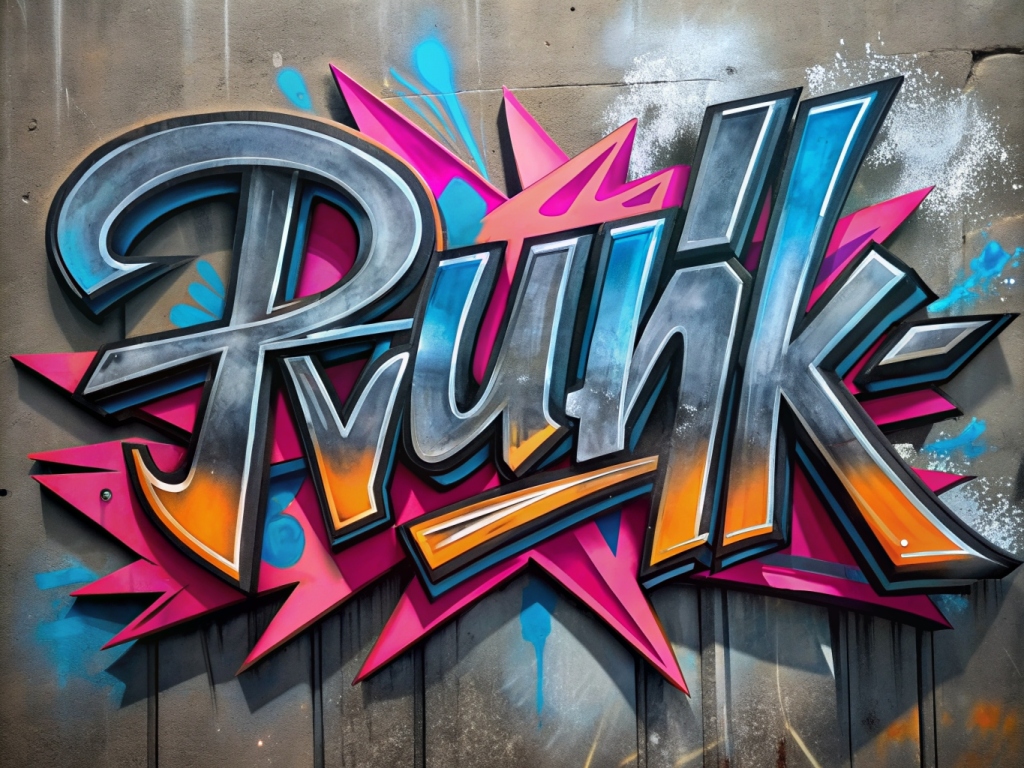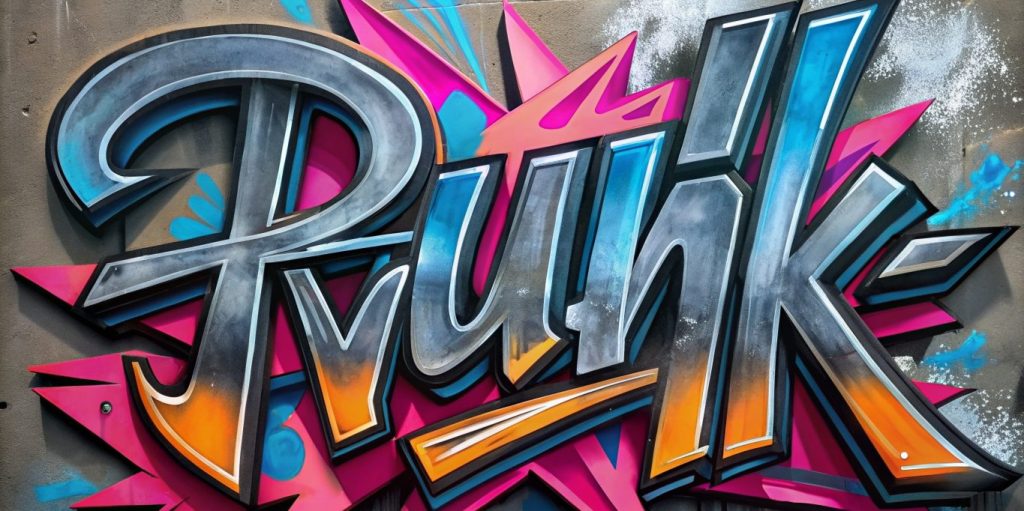
Introduction
The late 20th century witnessed the emergence of two rebellious cultural phenomena: graffiti art and punk rock. Both originated as counter-cultural movements that challenged mainstream norms and expressed dissatisfaction with societal constraints. This paper examines how graffiti art culture contributed to the punk rock movement, focusing on their shared ethos, visual symbology, and mutual influence on identity and expression.
Origins and Shared Ethos
Graffiti Art Culture: Graffiti art, as we recognize it today, originated in the late 1960s and early 1970s in urban environments like New York City and Philadelphia. Emerging from marginalized communities, it was a form of self-expression and defiance against socio-economic hardships and the invisibility imposed by mainstream society. Graffiti artists used public spaces to voice their existence, creating an art form that was accessible, raw, and rebellious.
Punk Rock Movement: Simultaneously, the punk rock movement began to take shape in the mid-1970s. It was characterized by its raw sound, anti-establishment lyrics, and DIY (Do-It-Yourself) ethic. Bands like The Ramones, The Sex Pistols, and The Clash epitomized punk rock’s anger and disdain for the status quo. Like graffiti, punk rock was a reaction to economic disparity, political disillusionment, and cultural stagnation.
Intersection of Values: Both graffiti artists and punk rockers shared a disdain for authority and a desire to reclaim space—be it physical or auditory—from a system that they felt excluded them. This common ground facilitated a natural alliance between the two cultures. Both sought to disrupt the complacency of the mainstream and to forge identities that were unapologetically raw and real.
Visual Symbology and Artistic Expression
Graffiti’s Influence on Punk Aesthetics: Punk rock’s visual identity was heavily influenced by graffiti art. The aesthetics of punk album covers, posters, and zines often mirrored the bold, brash styles seen in graffiti. For instance, the use of stencils, which was popularized by graffiti artists, became a staple in punk visual art. The art of Jamie Reid, who designed for The Sex Pistols, drew heavily on cut-and-paste, collage techniques akin to graffiti styles.
Street Art as Punk Expression: Punk bands often used graffiti to promote their music and ideals. Tagging band names and slogans on city walls became a way to assert presence and spread their message. This was especially prominent in cities like London, New York, and Los Angeles, where the walls themselves became canvases for punk ideology. Iconic symbols like the anarchy sign or the circle-A frequently appeared in both graffiti and punk art, reinforcing a shared rebellious identity.
Graffiti Artists in the Punk Scene: Several graffiti artists were directly involved in the punk scene. Jean-Michel Basquiat, who started as a graffiti artist under the tag SAMO, was deeply immersed in the punk rock culture of New York City. His work encapsulated the chaotic energy and raw emotion of both graffiti and punk, bridging the gap between street art and punk rock.
Cultural Cross-Pollination
DIY Ethic and Subcultural Networks: The DIY ethic was central to both graffiti and punk. This principle emphasized self-reliance and creativity without the need for commercial backing. Punk fanzines, much like graffiti, were produced with minimal resources and distributed through underground networks. These zines often featured graffiti art, further intertwining the two cultures.
Music and Art Collaborations: The crossover between graffiti and punk was not just visual but also musical. Punk bands frequently played at venues adorned with graffiti art, such as CBGB in New York. These venues became cultural hubs where the two movements interacted and influenced one another. Additionally, graffiti artists like Keith Haring collaborated with musicians, creating artwork for album covers and stage backdrops, thus merging the auditory and visual aspects of punk and graffiti.
Political and Social Commentary: Both movements served as platforms for political and social commentary. Graffiti often tackled issues like police brutality, racism, and economic disparity—topics that were also central to punk lyrics. By visually representing these themes, graffiti amplified the messages of punk rock, creating a multifaceted approach to protest and resistance.
Legacy and Continued Influence
Evolution into Mainstream: Over time, both graffiti and punk rock were co-opted by mainstream culture. What began as subversive expressions of dissent gradually gained commercial value. Despite this, the core ethos of both movements—rebellion, authenticity, and defiance—continues to inspire new generations of artists and musicians. The integration of graffiti art into punk rock has left an indelible mark on the visual and cultural landscape of contemporary music.
Modern Manifestations: Today, the legacy of graffiti and punk rock lives on in various forms. Street art has evolved, incorporating new techniques and reaching broader audiences, while punk rock’s influence can be seen in genres like post-punk and alternative rock. The DIY spirit persists in independent music and art scenes worldwide, a testament to the enduring impact of these intertwined cultural movements.
Conclusion
The relationship between graffiti art culture and the punk rock movement was symbiotic and mutually enriching. Both emerged from a need to challenge the status quo and to create spaces for marginalized voices. Through shared values, visual aesthetics, and cultural practices, graffiti art and punk rock forged a powerful alliance that reshaped the cultural landscape of the late 20th century. Their legacy endures, inspiring future generations to continue pushing the boundaries of art and music.

Comments
One response to “The Correlation Between Graffiti Art Culture And Punk Rock Movement”
[…] The Correlation Between Graffiti Art Culture And Punk Rock Movement […]
LikeLike